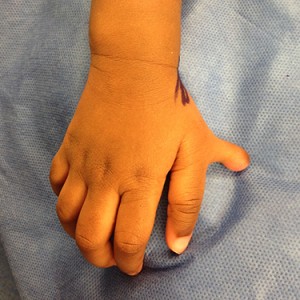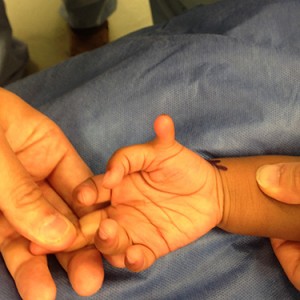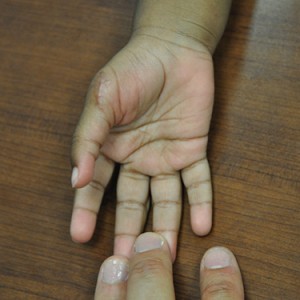Polydactyly
Supernumary or extra fingers and toes are relatively common. A family history of polydactyly is very common. In the past it was treated by simply tying a string around it and letting it fall off. This unfortunately left a tell tale sign of extra skin in the area. Simple polydactyly can be treated in the office by excising the extra tissue and placing a few stitches. More complex polydactyl (well formed bone and joints) requires an intervention in the operating room.
Treatment plan:
Simple Polydactyly – Excision and closure using local anesthesia in the office (20 min procedure) at age 0-3 mos
Complex Polydactyly – Excision, ligament rebalancing, complex closure (1hr procedure) at age 6-12 months in the operating room.
Thumb Duplication
Polydactyly when it involves the thumb is more complex given the unique muscles and ligaments inherent to this most important finger. The classification scheme is described by Wassel, the most common being a Wassel IV (where the extra finger comes off of the proximal phalanx).



Treatment Plan
1 yr of age: remove the extra digit, extensor tendon rebalancing, reconstuction of the ulnar collateral ligament (joint stabilization). A k-wire is often placed for 3-4 weeks to protect the reconstruction. Patients often require physical therapy.